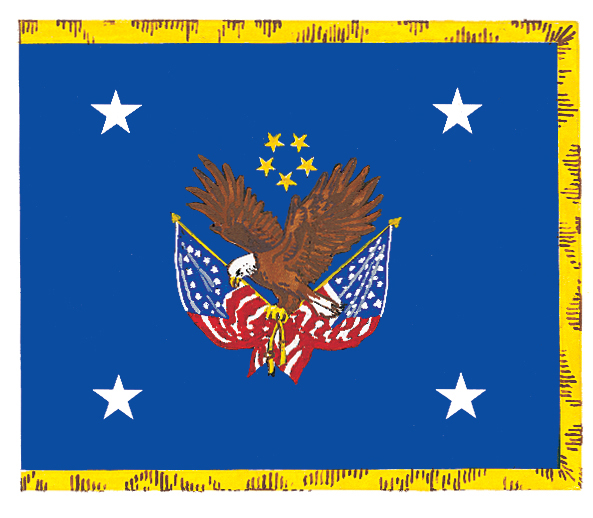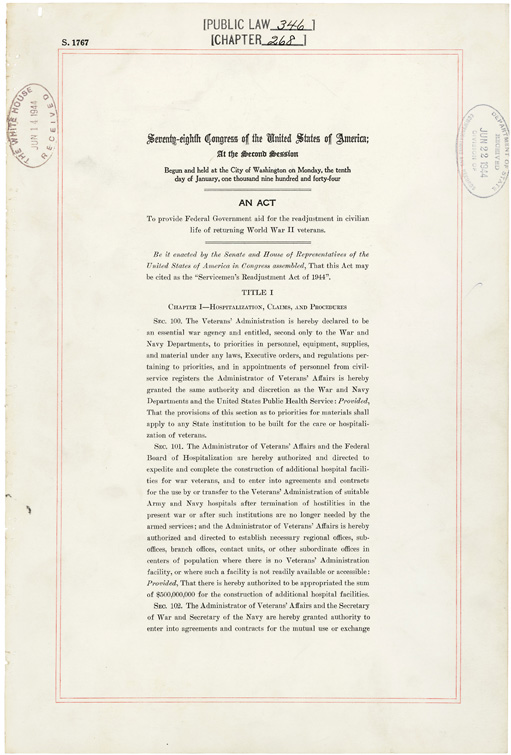Veterans Affairs, Department of, also called the VA, is an executive department of the United States government. It administers benefits to veterans of U.S. military service, their dependents, and the dependents of deceased veterans. The secretary of veterans affairs, a member of the president’s Cabinet, heads the department. The secretary is appointed by the president, subject to U.S. Senate approval.

The benefits administered by the department include health care, disability and death compensation, education assistance, burial assistance, and help in obtaining home loans. Veterans apply at VA health care facilities to receive health care benefits. Veterans and their dependents apply at the department’s regional offices to receive all other benefits. The dependents of veterans are not eligible for health care benefits.
The Department of Veterans Affairs has at least one regional office in each U.S. state. It also has regional offices in Puerto Rico, the Philippines, and Washington, D.C. In addition, the department operates veterans’ hospitals in all U.S. states, Puerto Rico, and Washington, D.C. The Department of Veterans Affairs administers national cemeteries for deceased veterans and for their spouses and children. The department’s website at http://www.va.gov presents information on its activities.

Benefits and other services.
The VA pays disability or death compensation or pensions to millions of veterans and dependents of deceased veterans. The department also treats veterans in its hospitals and operates clinics for veterans. Millions of veterans and members of the military service hold insurance policies administered by the department. The VA also guarantees home loans to veterans and their dependents.
The Department of Veterans Affairs administers an educational training program authorized by a series of laws popularly referred to as GI Bills. Veterans and their dependents have received GI Bill training since 1944. That year, Congress passed the first GI Bill, the Servicemen’s Readjustment Act, for veterans of World War II (1939-1945). The second GI Bill, the Veterans’ Readjustment Assistance Act of 1952, aided veterans of the Korean War (1950-1953). The Veterans’ Readjustment Act of 1966 was intended for people who served in the armed forces after the Korean War. The act provided educational benefits for those who served between Feb. 1, 1955, and Jan. 1, 1977.

Men and women entering military service between Jan. 1, 1977, and July 1, 1985, qualified for the Post-Vietnam Era Veterans’ Educational Assistance Program. To get benefits, members of the military service must deposit part of their pay in a special savings fund. The government deducts contributions from each person’s monthly pay and adds a certain extra amount to the fund, depending on how much the person invests.
The Montgomery GI Bill, which became effective July 1, 1985, established two educational benefits programs. The first program benefits men and women who began active duty after June 30, 1985. Participants in this program have their military pay reduced for a certain period of their active duty. In return, they receive a larger amount of money for full-time training.
The second program under the Montgomery GI Bill provides educational benefits for members of the Reserves and the Army and Air National Guard. The program is available to members who enlist, reenlist, or extend an enlistment for six years after June 30, 1985. Participants receive money while attending an institution of higher learning as full-time students. Veterans covered by the Montgomery GI Bill include those who took part in the Persian Gulf War of 1991 and the Iraq War (2003-2011).
A new law called the Post-9/11 GI Bill took effect on Aug. 1, 2009. The law provided extended educational and related benefits for veterans who were on active duty on or after Sept. 11, 2001.
History.
Veterans of the Revolutionary War (1775-1783) received pensions under a series of laws adopted during the late 1700’s and early 1800’s. Temporary help had been given to these veterans in the form of cash bonuses and land grants. The office of the Commissioner of Pensions was set up in 1849 to administer all military pension laws under the direction of the secretary of the interior. The first U.S. Soldiers’ Home was established in 1851 in Washington, D.C., to provide a home for invalid or disabled soldiers.
Today, the Department of Veterans Affairs operates domiciliaries for veterans who do not need hospital care but who are unable to earn a living and lack means of support. There are also nursing home units associated with the hospitals operated by the Department of Veterans Affairs.
During World War I (1914-1918), the Bureau of War Risk Insurance was created under the War Risk Insurance Act. The bureau administered insurance against death or disability of members of the armed forces. The act also set up the Federal Board for Vocational Education to provide vocational rehabilitation for disabled veterans. Five government agencies were then serving veterans. To eliminate the duplication, Congress created the Veterans Bureau in 1920. In 1930, the Veterans Administration (VA) was created by combining the Veterans Bureau with the National Home for Disabled Volunteer Soldiers and the Bureau of Pensions.
In 1988, Congress passed a bill that made the Veterans Administration an executive department of the U.S. government. The bill renamed the VA the Department of Veterans Affairs. The changes went into effect in 1989.
See also Agent Orange ; Brown, Jesse ; Pension (Federal pension plans) .
